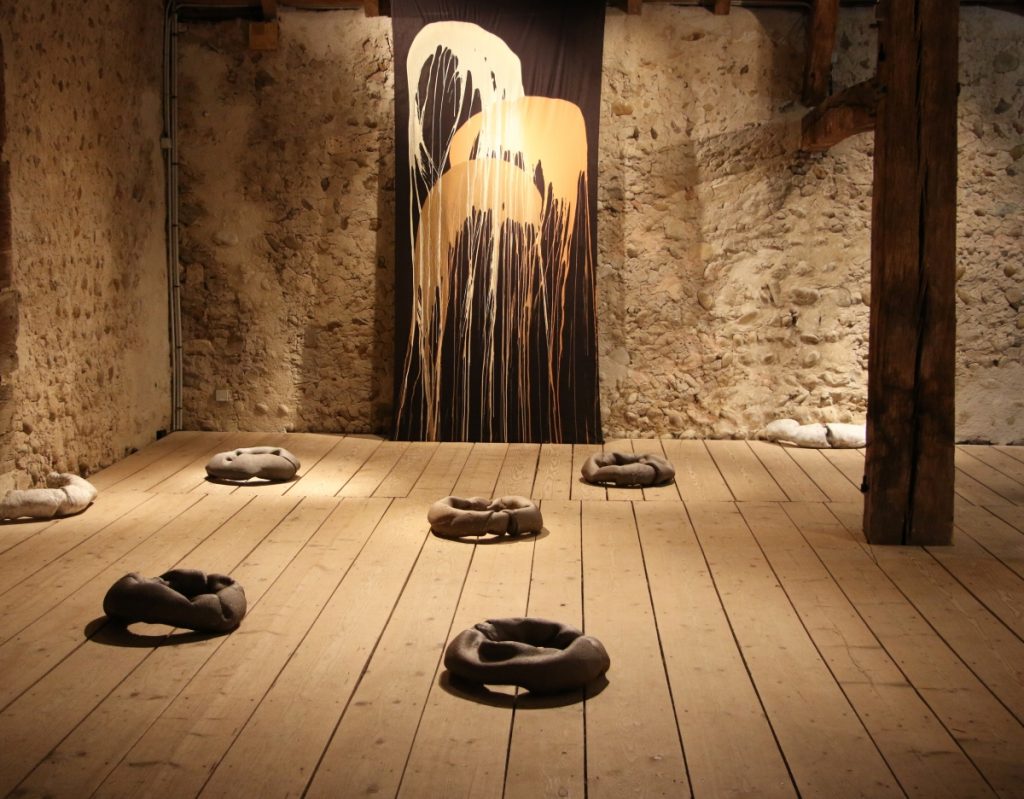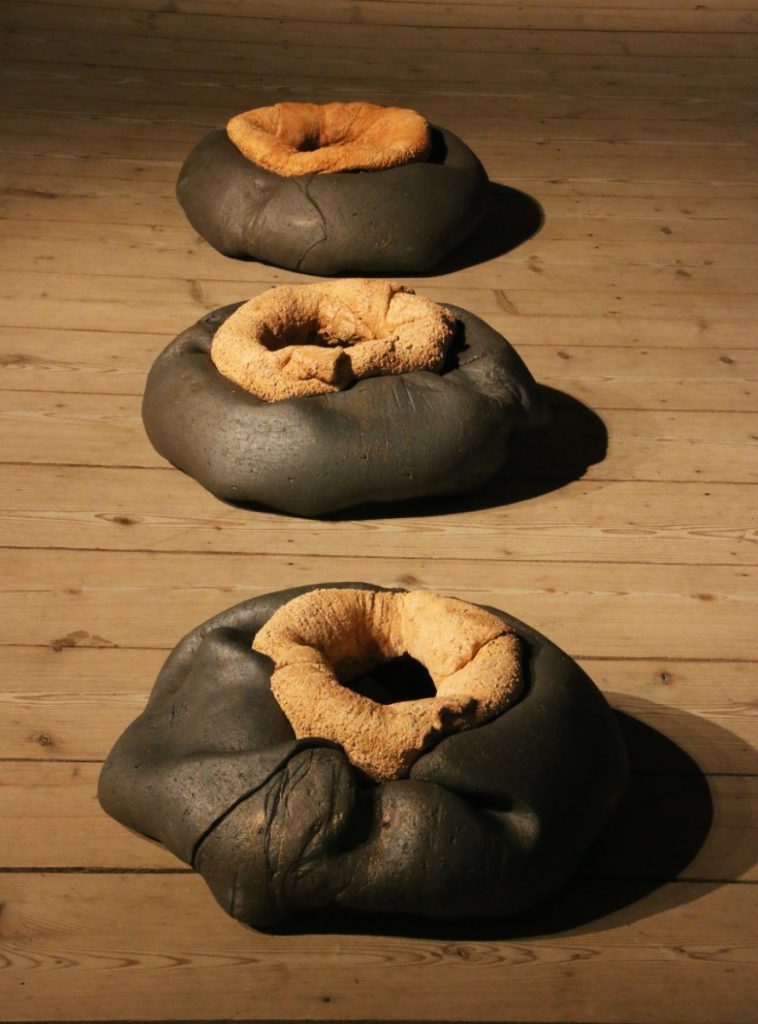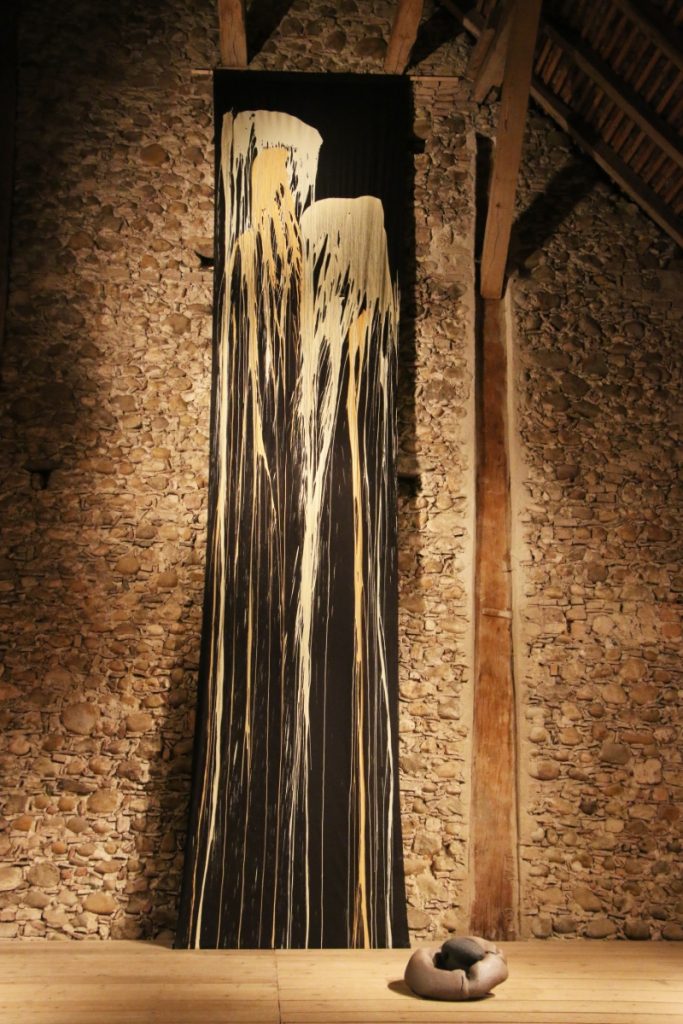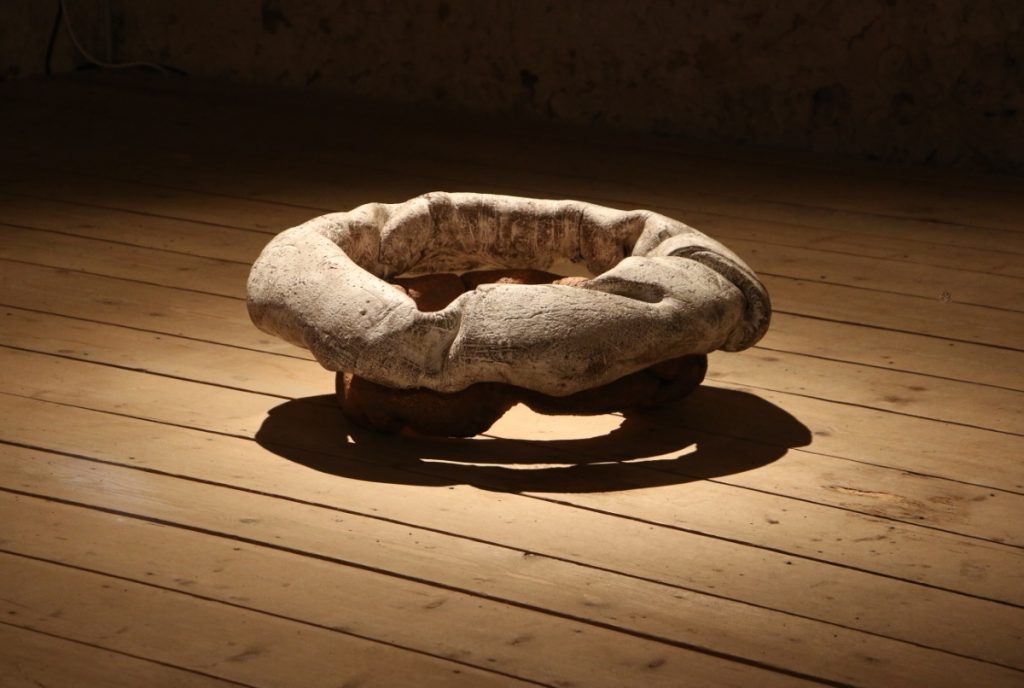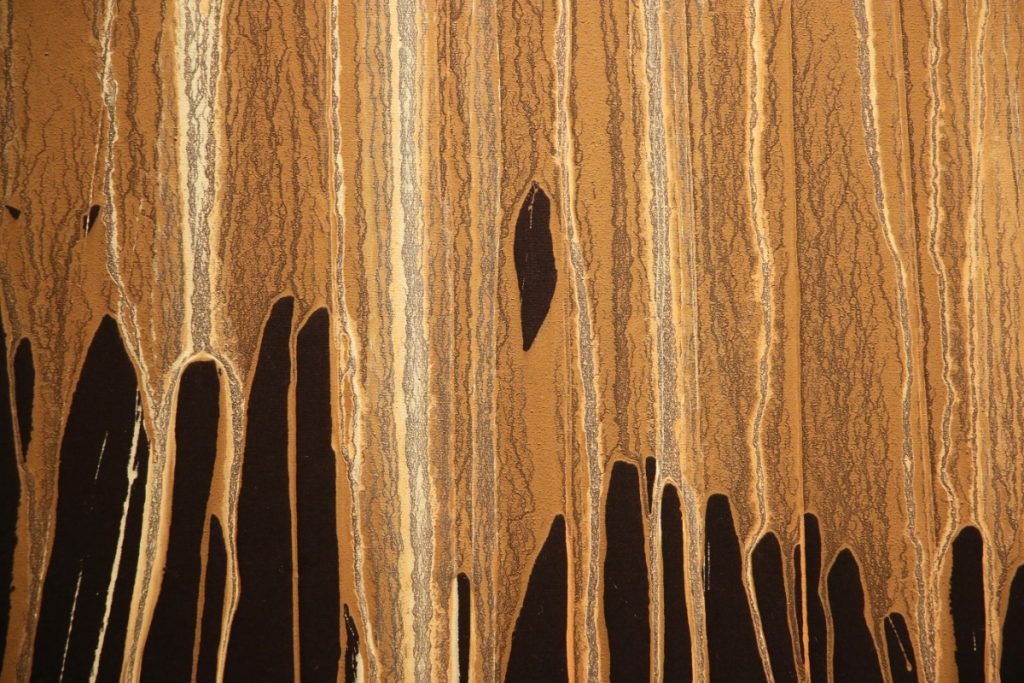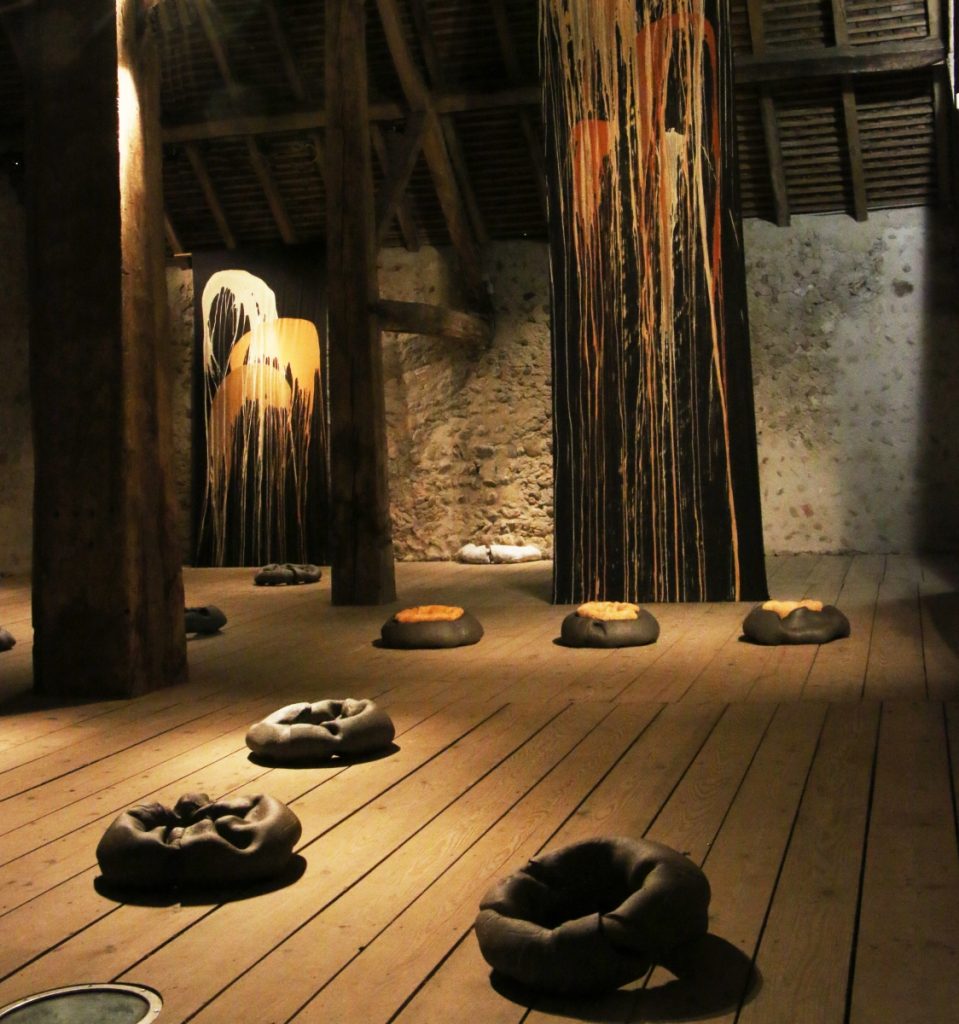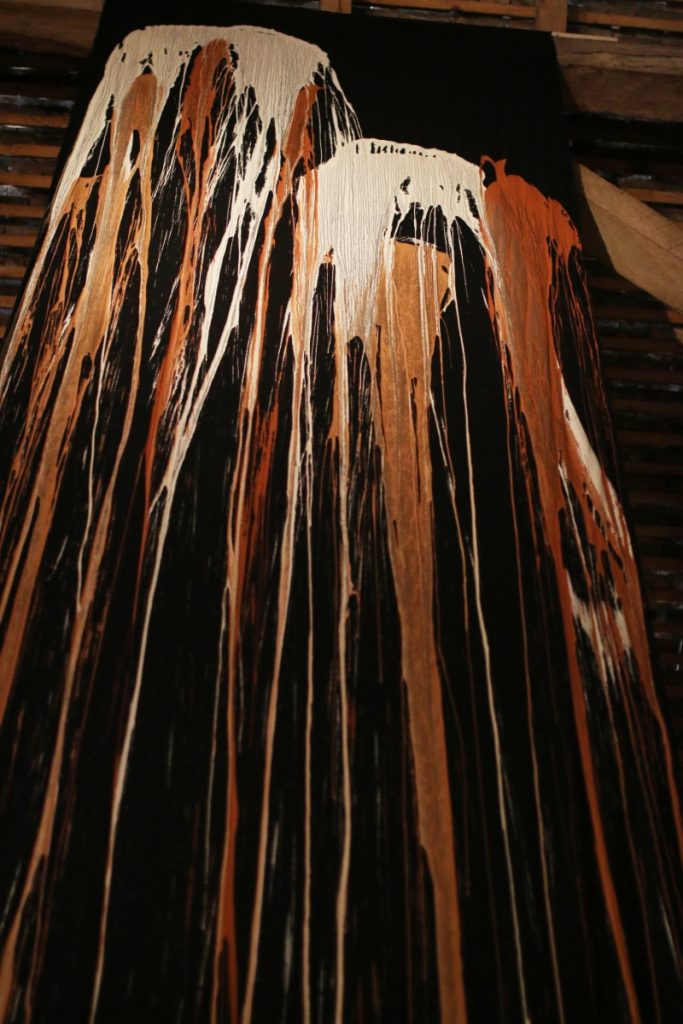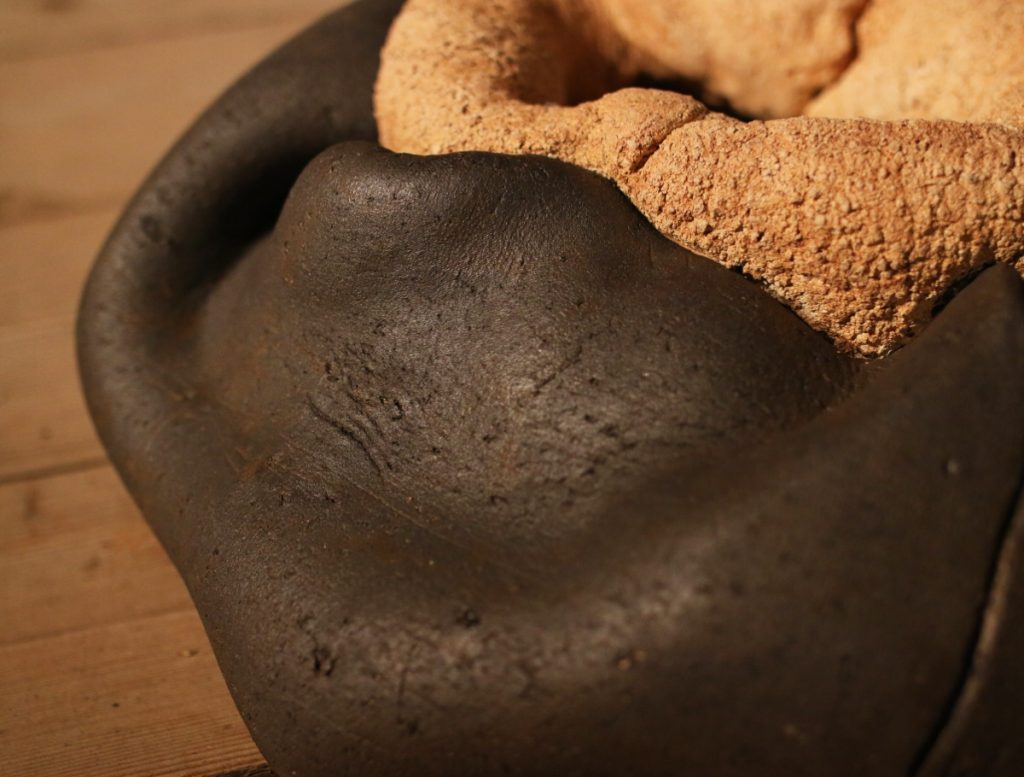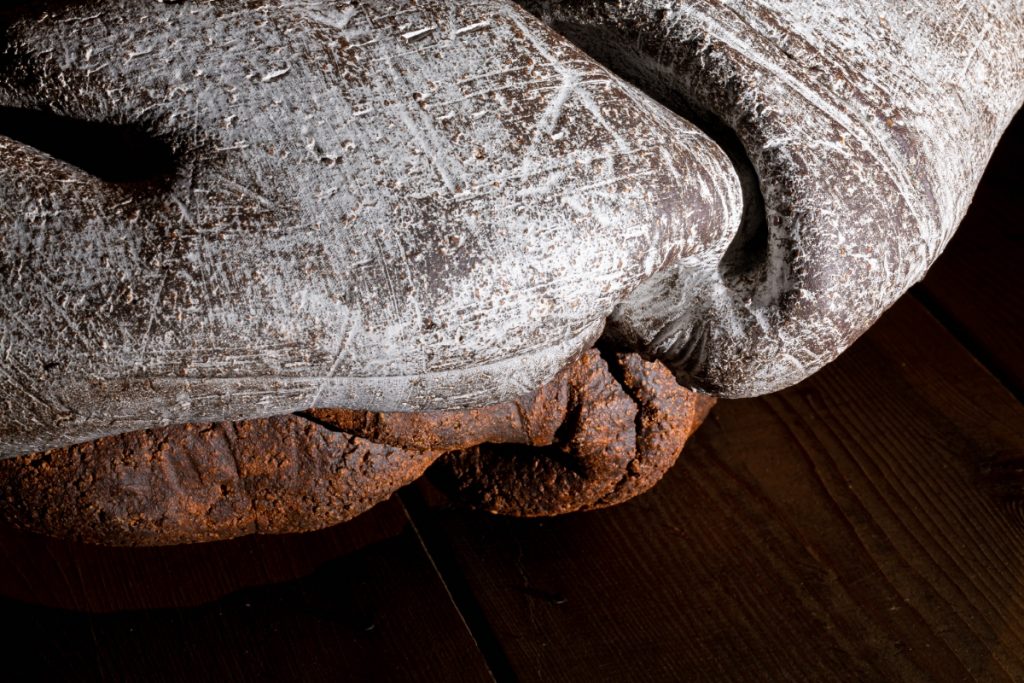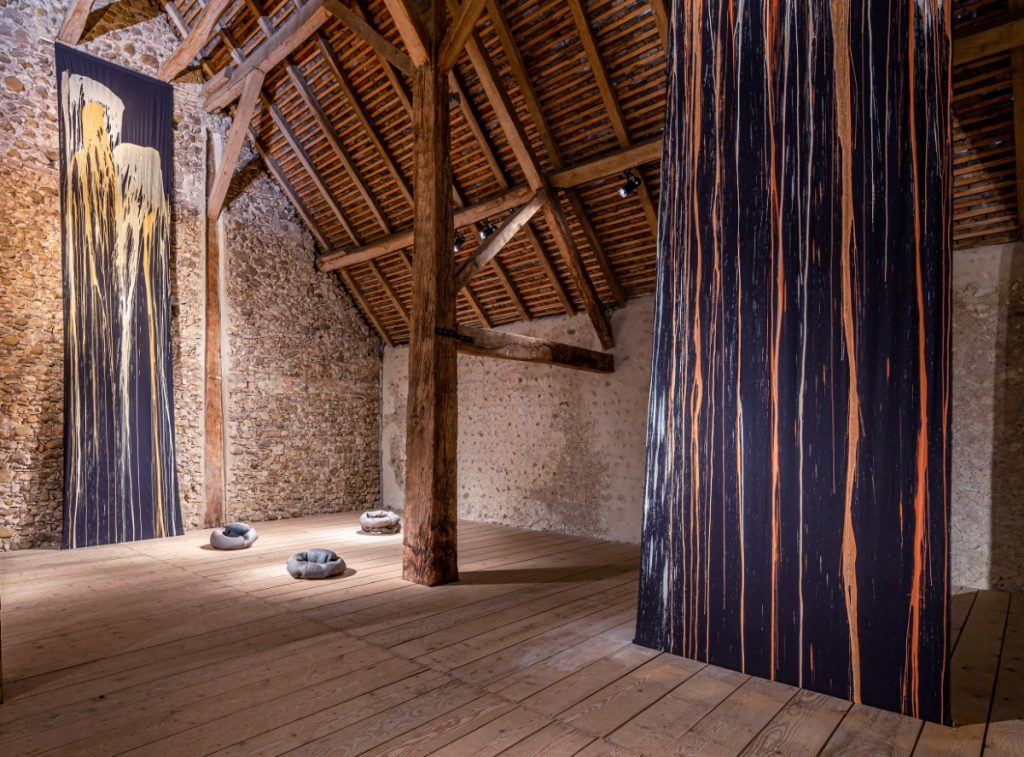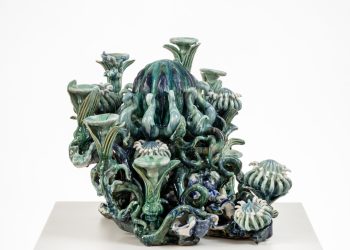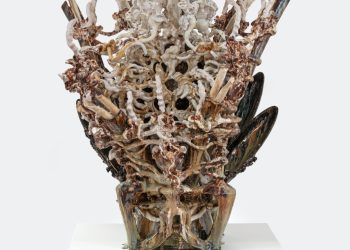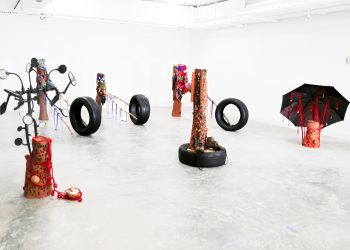Jane Norbury: Flux d’Argiles, 2021
Flux d’Argiles / Flow of Clays. Installation at La Grange Dîmière, Le Pin, Isère, France, 2021
This installation was conceived for La Grange Dîmière, an old tithe barn in Isère, France, which belonged to a Cistercian monastery, now demolished. The barn currently belongs to the state and is dedicated to ceramic exhibitions. Its imposing timber frame rises to 18m at the centre of the single space covering 400m2.
Clay is very present on the site; the silts from weathered rocks in the surrounding hills are washed down to be deposited locally. Several adobe buildings adjacent to the barn are witness to its abundant presence.
I wanted to emphasise the process of creation of clay in this work which I call Flux d’Argiles (flow of clays). I contrast the movement of liquid clay flowing vertically under gravity, seen on the six large suspensions, with the more sedimentary fired sculptures lying horizontally on the floor. These annular forms nevertheless evoke a feeling of movement and of passage, and in some cases push up to meet the flows on the cloths. Les Passeuses, as I have named them, are a series worked during lockdown in 2020 and 2021. They are created from clay slabs folded in on themselves to become large rings, open in their middle. They evoke for me the fluid movement necessary to go towards the unknown, inviting us to pass from one side to the other: like traversing the threshold of a door, or allowing us to cross to the other side of the river.
The appropriation is sober. Few pieces punctuate the space. Long black hangings, sometimes huge, segment the space or lean against the vertiginous walls. These canvases, with the appearance of primitive tapestries, testify to bold gestures and become the supports for the flows of different slips (raw clay diluted in water), associated for their colour tone and composed from earths collected from nine different sites around France and the UK, including a pale ochre earth from nearby.
Facing them and around them, mainly on the ground, revolve rings of fired clays. These elementary, magmatic forms, heavy from time immemorial, carry with them the memory of alluvial mixtures, evoking the sudden petrification of a movement in progress. Built from slabs, which are then rolled in a round and constraining container, the clay coils fold, breathe, and exhale, creating cavities and highlights. More and more, Jane Norbury adds to these viscera of clay, a second ring of different clay, whose grogged texture and colour, after firing, contrast with the first. Together, these two associated clays must react in the same way to the firing and have the same degree of shrinkage. The clays merge, like the phenomenon of subduction over a long geological period. Despite an extremely strong physical commitment, Jane Norbury seeks to extricate herself from this process which she wishes to be without force. She arranges and leaves the task of activating the space to the clay elements, not without the complicity of the spectator-actor.
Stéphanie Le Follic-Haddida, 2021


